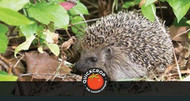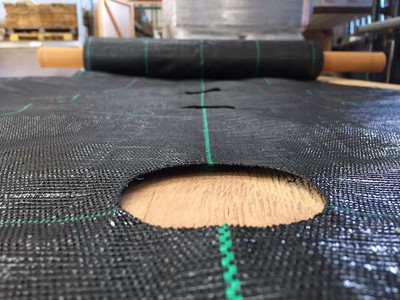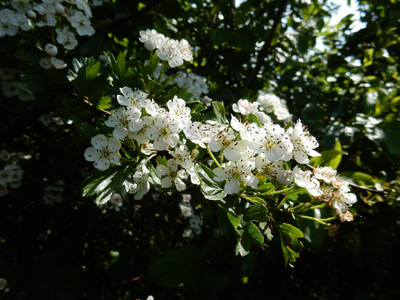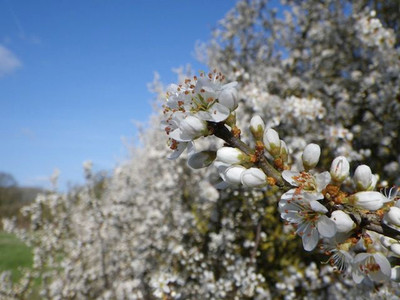The Best Wildlife Friendly Hedging for Gardens
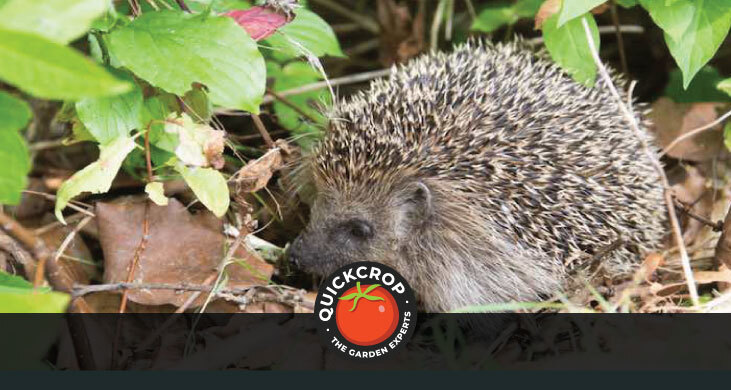
When choosing bare root hedging for your garden, a number of different factors can come into play. Your number one priority might be privacy, creating a natural windbreak, or ease of maintenance. However hedging can be immensely beneficial when it comes to wildlife and biodiversity, and almost any native hedging choice will have a positive effect.
Potential Wildlife Benefits of Garden Hedging:
- A source of pollen and nectar
- A place to nest (e.g. for bumblebees) as well as an overwintering habitat
- Depending on the variety, fruit and nuts can provide food and foraging opportunities
- Shelter from predators
- Fallen leaf litter can provide habitat for insects or earthworms, which in turn can nourish your garden soil
- Provide ‘wildlife corridors’ or pathways to move across the landscape for all kinds of creatures, including pollinating insects or bats

Schwegler Bat Box 2F (with Double Front Panel)
View ProductIndeed, good quality garden hedgerow can support all 4 of the essential needs of pollinators: 1) nectar and pollen, 2) breeding space, 3) overwintering space and 4) landscape corridors.
If assisting wildlife is a priority, hedgerow should not be overly manicured. Cutting the foliage back will discourage fruiting and even flowering. Of course everything within reason, and a certain amount of maintenance is probably best even if only for keeping the neighbours happy!
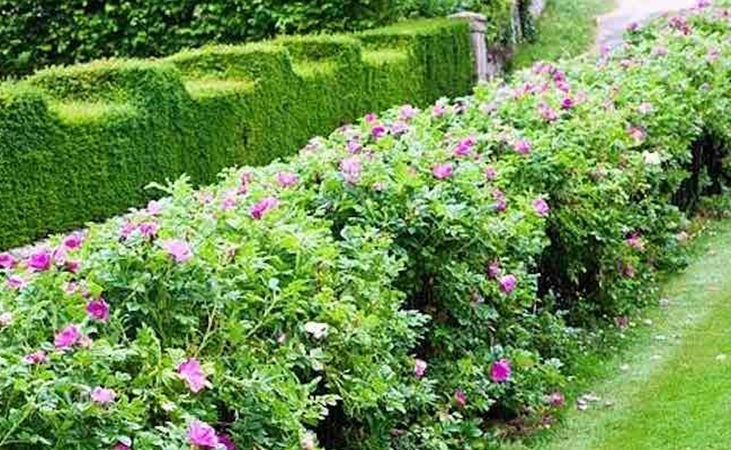
A Note on Bare Root Hedging
Buying bare root hedging is the most cost effective way to grow your own hedge. They are called bare root hedge plants because they have been dug up and sent out as is with no compost or container. This doesn't harm the little plants, as they enter a dormant state once they are dug up. This also serves to make them easier to transfer than their potted counterparts.
At Quickcrop our bare root hedge plants are ‘premium’ stock. What does this mean? Well, these bare root plants are grown from seedling stock planted in a field situation at approx. 6 inches apart to allow more room for root development. Plants are pre pruned to 15cm to create a multi-stemmed plant.
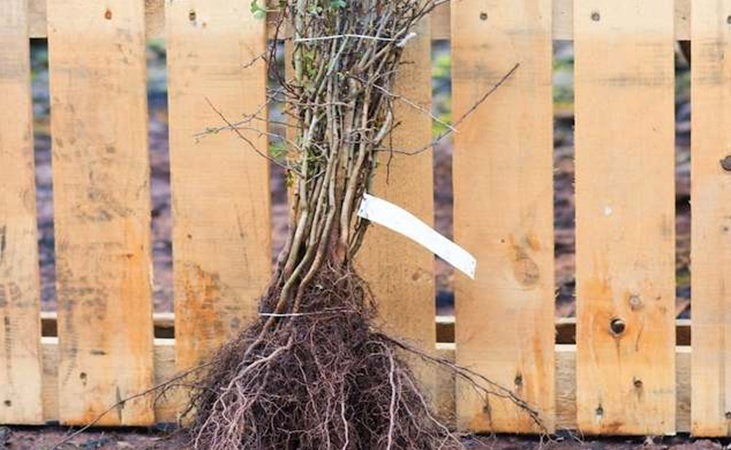
Premium plants are also 'undercut', which involves pruning the roots 15cm below ground. This produces a larger root ball which is much quicker to establish. Premium hedging is more suitable for garden applications, where a thick hedge is needed quickly.
Below we highlight some of the best options when it comes to wildlife-friendly hedging plants. These can be planted as bare root stock from mid November to March.

Common Hawthorn Bare Root Hedging Plants
View Product1. Hawthorn
(blossoms: May to June)
Dense and thorny with dark green leaves, Hawthorn hedging is commonly seen on farmland around the country, which points to how reliable it is as a dense and impenetrable boundary. The hedge (or tree as the case may be) flowers in May and is strongly associated with the festival of Bealtaine.
The fragrant creamy white flowers are a popular source of pollen and nectar for bees and hoverflies.
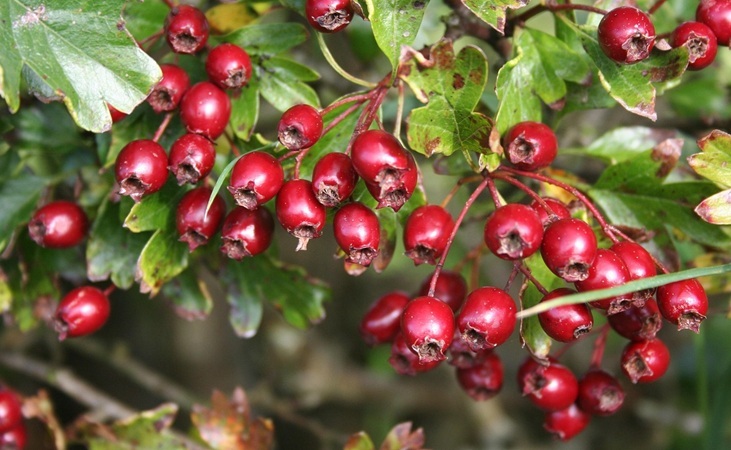
Red hips or ‘haws’ emerge in autumn, providing an invaluable food source for birds such as redwings and fieldfares (Be aware that if Hawthorn is kept overly trim, it will produce few or no berries/nuts). The thorny foliage can also be used as nesting habitat by many bird species.
Hawthorn hedging is very adaptable and can tolerate a range of soil conditions. Another advantage is that it is relatively fast to establish.
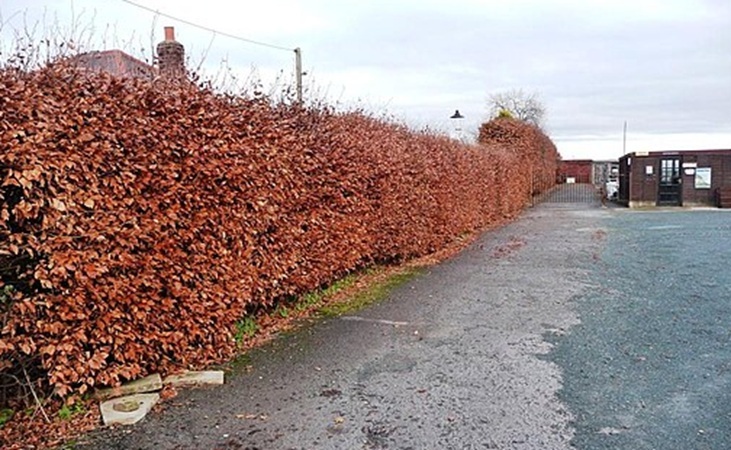
2. Beech
(blossoms: April to May)
Beech is not actually native to Ireland, but it has become well-established as a garden boundary as well as in rural hedgerows and parks. It is regarded as an excellent option for wildlife-friendly hedging, while the plant’s tendency to fill every gap of space also marks it out as a dense, secure barrier once it grows.
Speaking of growth, this is a relatively fast-growing hedging option, with an approximate rate of 30-60 cm a year.

Common Beech Bare Root Hedging Plants - (Fagus Sylvatica)
View ProductThe dense foliage provide a nesting site for birds (like robins, blackbirds and blue tits) as well as habitat for other small creatures. Beech retains its leaves for much of the winter (by which point they will have turned from glossy green to a copper brown colour), so you will be providing almost year-round habitat.
In autumn the hedge will also produce small distinctive-looking nuts called beechnuts, which are a protein-rich source of food for squirrels, birds and other wildlife.
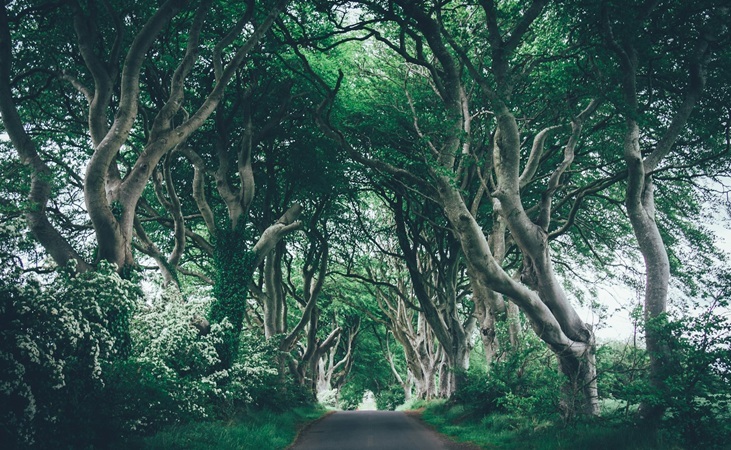
Did you know? The iconic Meikleour Beech Hedge in Scotland is the tallest and longest hedge in the world: at 530 meters long it reaches nearly 30 meters in height. Folklore has it that this length of European Beech was allowed to grow toward the heavens because the men that planted it were killed in the Battle of Culloden.
You may also be very familiar with the ‘Dark Hedges’ in County Antrim, an avenue of beech trees that have been featured in Game of Thrones.
3. Hornbeam
(blossoms: April to May)
This fast-establishing semi-evergreen hedge is a popular option for suburban gardens, creating a tall natural screen for privacy. It also performs very effectively as a windbreak, as well of course as being very beneficial for wildlife.

Hornbeam Bare Root Hedging Plant
View ProductHornbeam is a very adaptable hedge variety that can thrive in a range of soil conditions. Hornbeam can optionally be ‘pleached’, or grown in such a way that it resembles a hedge on stilts.
The deep green foliage will turn a pale yellow in autumn before taking on a light brown appearance in winter. The oval shaped leaves with serrated edges lend this hedge a similar appearance to Common Beech.
Hornbeam provides year-round shelter, food and nesting opportunities for a variety of wildlife. The hedge produces green ‘catkins’ in spring and early summer which are attractive to pollinators.
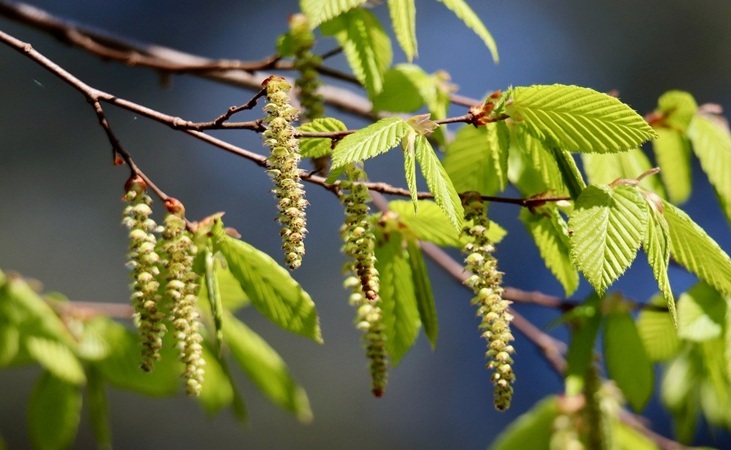
Later in autumn, winged seeds or nuts provide a valuable food source. Common Hornbeam seeds are a favourite food of the Hawfinch, which is the UK’s largest finch and is in an alarming decline.
The hedge also supports an abundance of insects, which in turn increase the biodiversity of your garden or outdoors, providing sustenance for birds and other wildlife.
Did you know? Hornbeam trees can live for over 300 years.
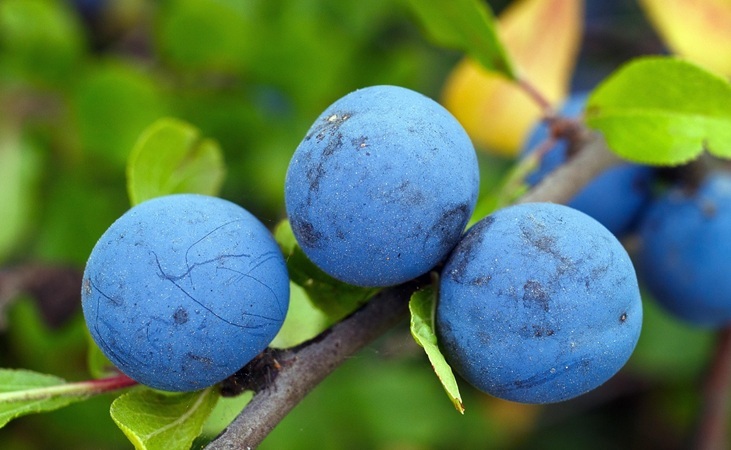
4. Blackthorn
(blossoms: March to April)
Blackthorn is one of the earliest hedging plants to flower in spring (from mid February onwards), providing a valuable source of nectar for pollinators. You will often see bees and hoverflies drawn to the white flowers. Blackthorn is also a food plant for the Common Emerald moth caterpillar.
As the year moves into autumn and winter, pollinated flowers will develop into bright blu-black ‘sloe’ berries, which are a popular food source for blackbirds, thrushes and other bird species.
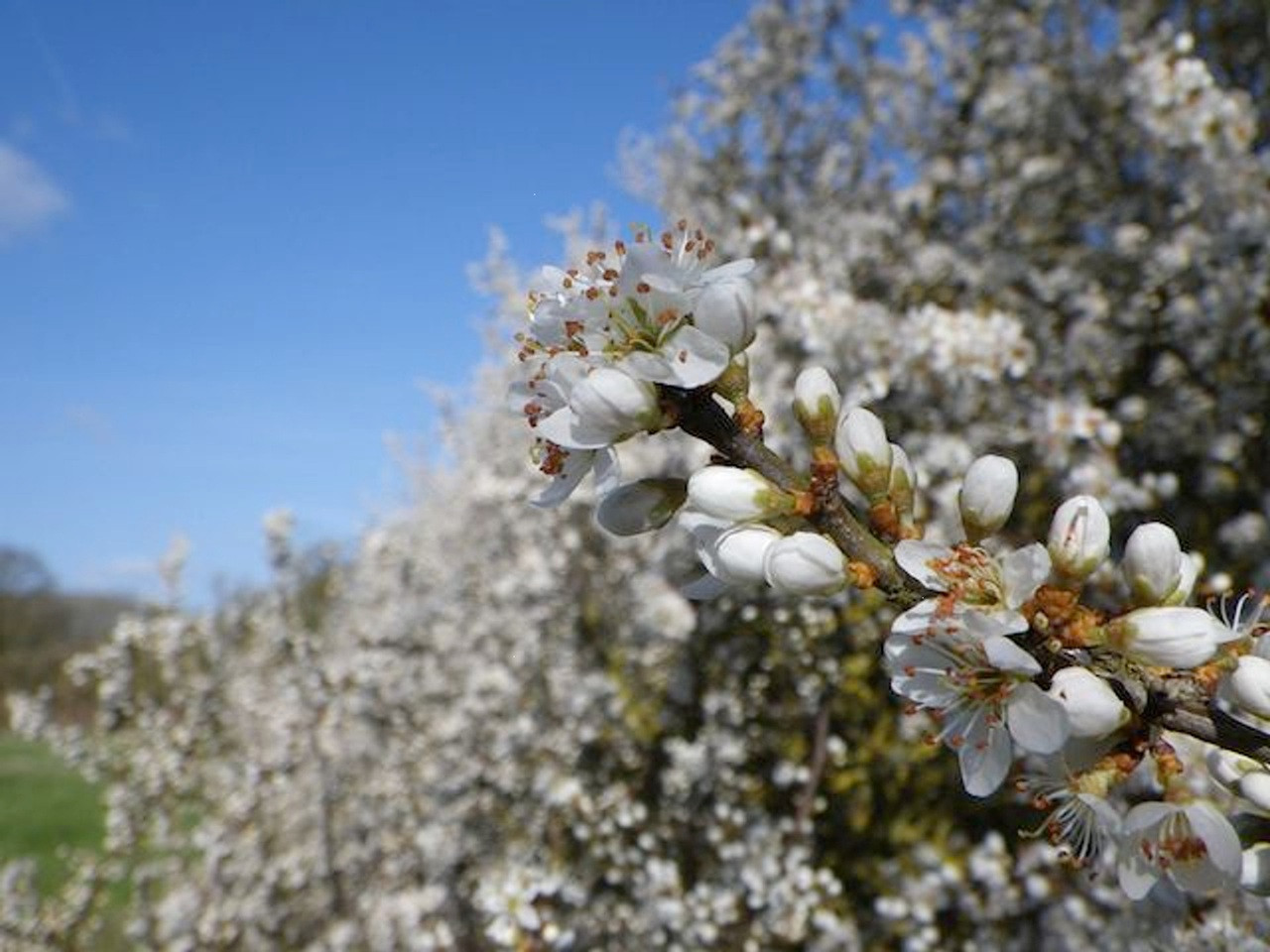
Blackthorn Bare Root Hedging Plants
View ProductBlackthorn’s dense and thorny growth is an excellent nesting site for birds such as yellowhammers or song thrushes.
Note that this may not be the best choice for smaller gardens, as the hedge produces suckers.
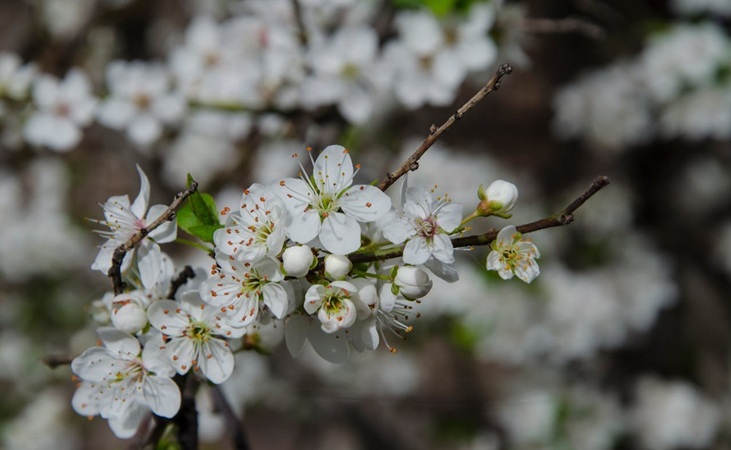
5. Crab Apple
(blossoms: April to May)
The wild crab apple tree is one of Ireland’s few native apple species and can be seen growing in woodlands and hedgerows across the country. Evidence shows that hunter-gatherer communities were eating crab apples here as far back as 7000BC!
Crab apple or Malus Sylvesteris is also an excellent choice as part of an edible, wildlife-friendly hedge. It produces attractive pinkish/white blossoms which provide pollen and nectar for pollinators in spring.

Bird and Wildlife Friendly Native Hedging Plants - Pack of 25
View ProductSmall and nutritious apples follow on in autumn and winter, providing food for small mammals such as foxes and badgers. Crab apple leaves also serve as a host plant for moth and butterfly caterpillars.
Robins, finches and other birds can use the dense, twiggy growth as a nesting site, while it can also provide cover and shelter for a variety of small mammals.
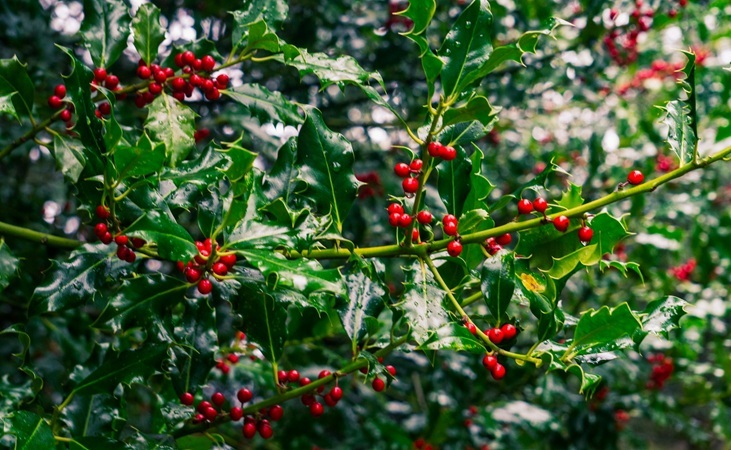
6. Holly
(blossoms: early spring to early summer)
Holly is, of course, traditionally associated with Christmas - but it is actually an excellent evergreen hedging option with year-round benefits for wildlife.
The bright red berries provide a vital food source for birds in the ‘hungry gap’ of winter: the mistle thrush, in particular, is known for zealously guarding holly trees from other foragers (Note: only the female holly plant will produce berries). These berries can be toxic to pets and children: something to keep in mind.
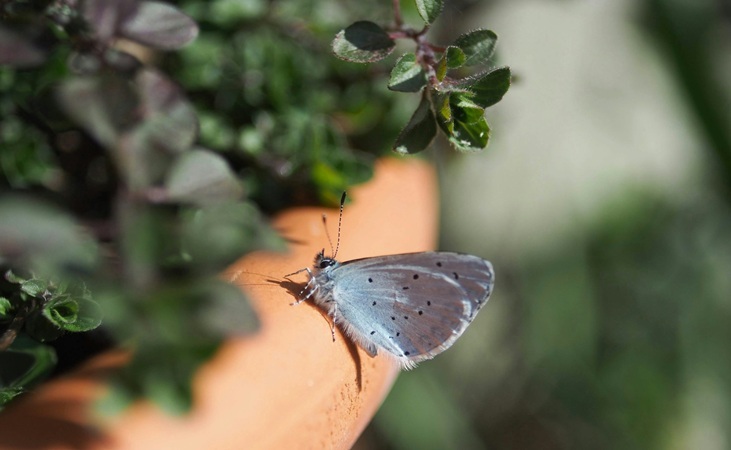
In late spring meanwhile the flowers provide nectar and pollen for pollinators; Holly is also an important larval food plant for the Holly Blue Butterfly.
The waxy green foliage not only produces a dense, visually appealing hedge; it also provides robust wildlife habitat and shelter in winter, with the prickly leaves deterring predators (incidentally, this also makes holly very livestock-tolerant).
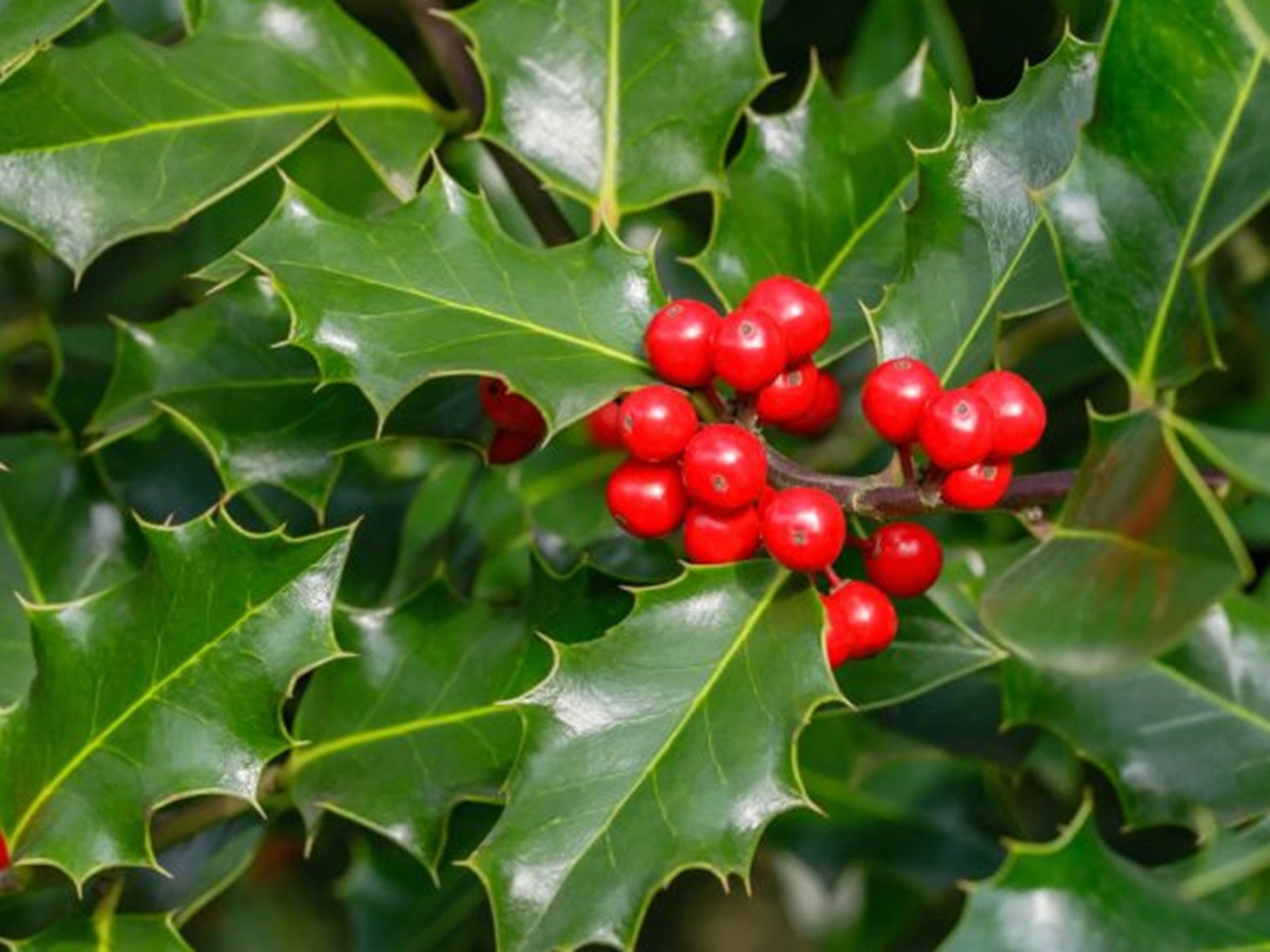
Green Holly - Lex Aquafolium, 1-3 Pack
View ProductHolly is hardy and shade tolerant; if there’s one drawback it is that it’s relatively slow to establish. It is also a great option as part of a mixed hedge.
7. Guelder Rose
(blossoms: May to July)
Guelder Rose (Viburnum opulus) is a native Irish shrub that can be grown as informal hedging or as a component of mixed hedging. It produces flat clusters of creamy-white blossoms in summer: highly attractive to bees and other pollinators.
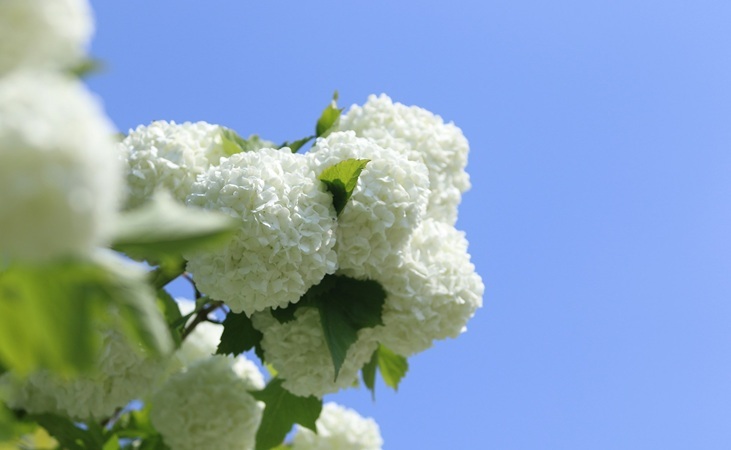
As summer progresses, the flowers give way to bright red berries that last into autumn. These serve as a key food source for many bird species, including bullfinches and mistle thrushes.
The three-lobed leaves also act as a food plant for moth larvae, such as those of the Yellow-barred Brindle.
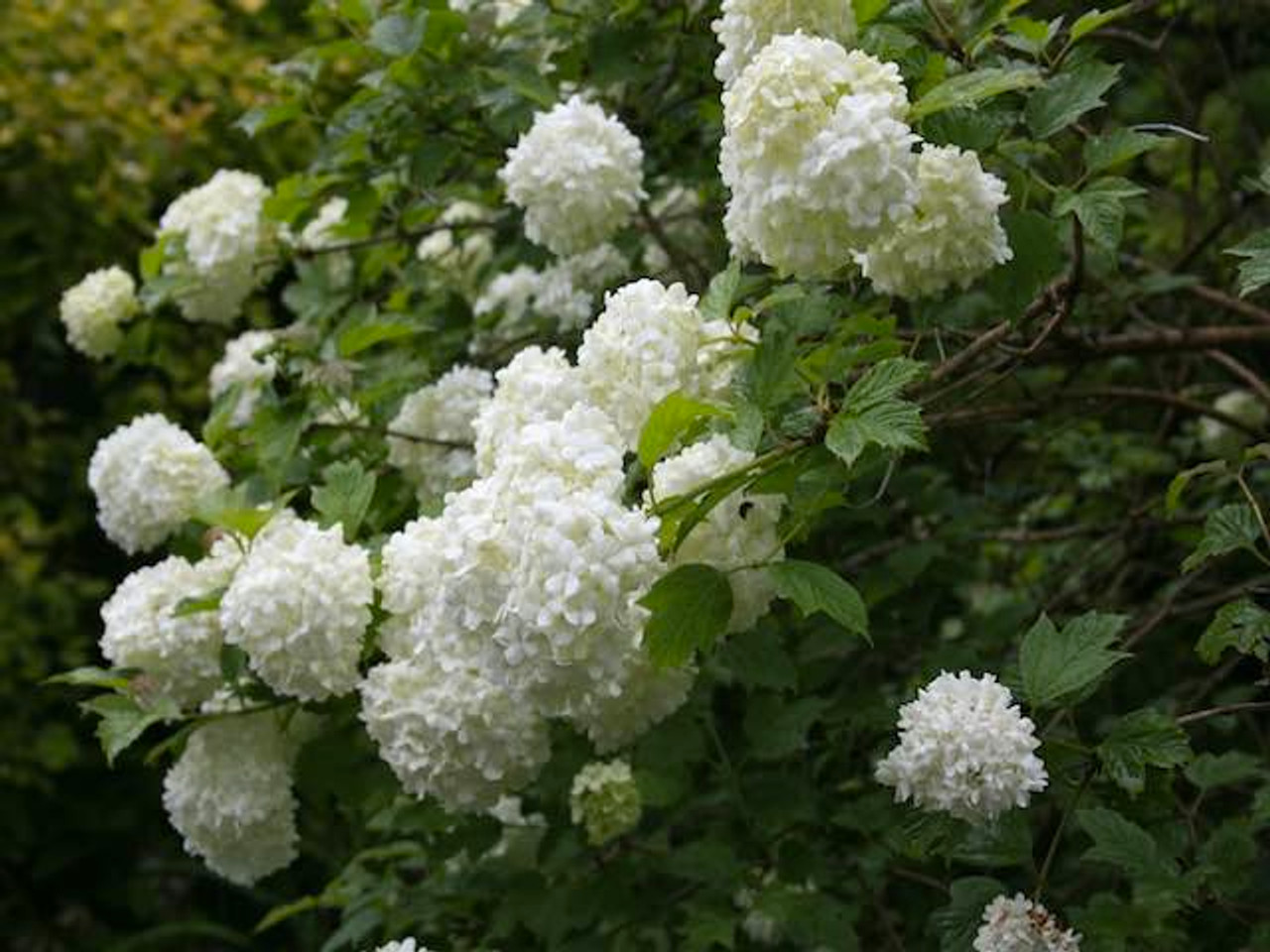
10 x Viburnum Opulus - Guelder Rose
View ProductGuelder Rose is best planted in a mixed hedge with other varieties like Hawthorn or Dog Rose, as it can be less dense than thornier species. The foliage will provide some striking autumn colour before it fades and falls to the ground.
8. Hazel
(blossoms: late winter to early spring)
Delicate, slender, tassel-like flowers called ‘catkins’ start appearing in late winter and early spring, providing early sources of pollen for bees and other pollinators. Hazelnuts ripen in autumn and are gladly eaten by birds and mammals, such as squirrels, jays or the Great Spotted woodpecker (the latter is particularly reliant on this food source in winter).
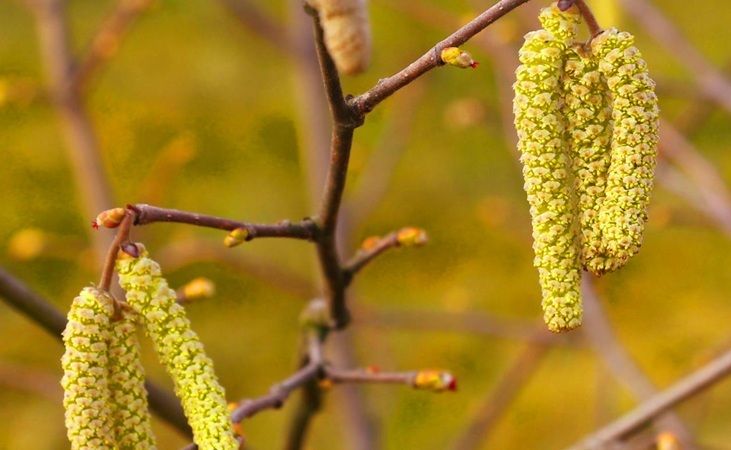
The leaves support various moth caterpillars, such as the Pink Tussock, Barred Umber or the Grey Dagger moth. A real all-rounder then!
One thing to be aware of is that hazel in itself won’t create a very dense barrier when grown as hedging, so it is perhaps best utilised as part of a mixed hedge pack or planting. Try underplanting with snowdrops for added visual dazzle.
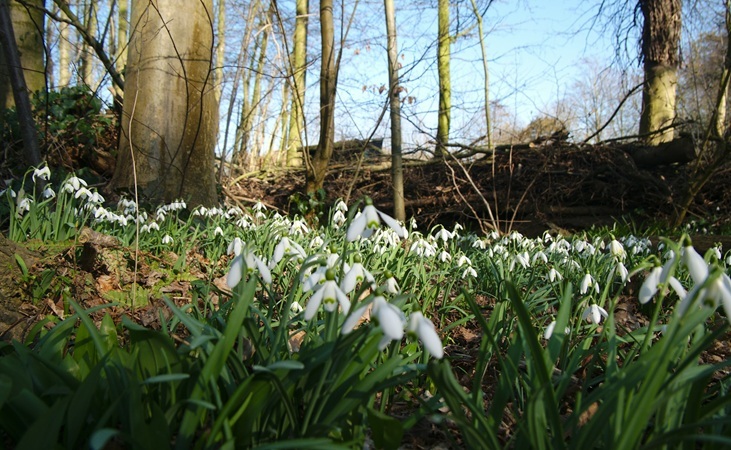
Mixed Hedging
Native hedging mixed packs are a great option; these are a mix of different species which complement each other.
Growing a mix of hedging species has the advantages of increased seasonal variety and biodiversity, as well as providing more food sources for a greater diversity of wildlife. The advantages of some hedge/tree species can also cancel out the disadvantages of others - such as a relative lack of density or cover.
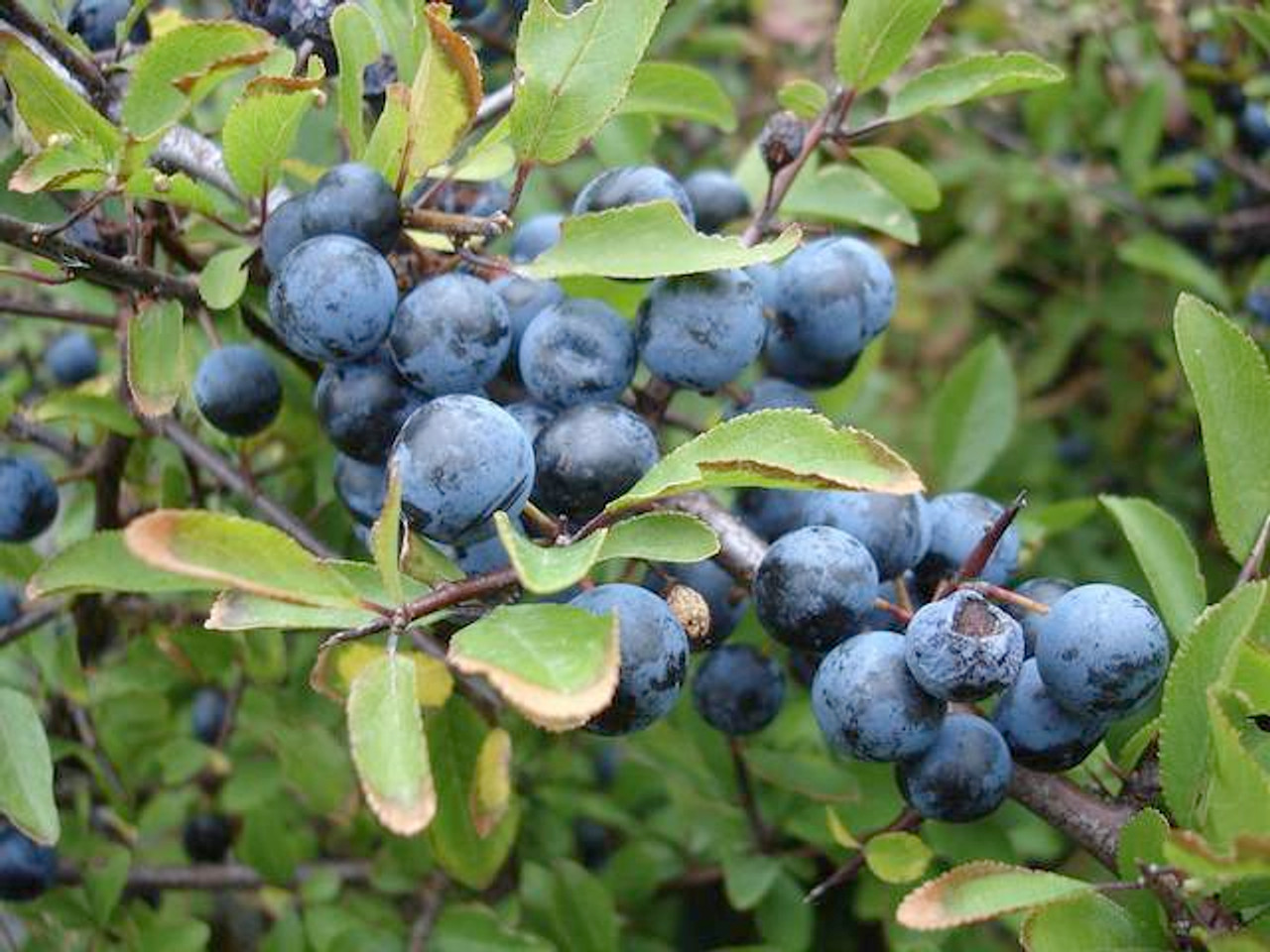
Native Conservation Hedging Mix - Value 50 pack
View ProductAt Quickcrop we have designed a few different bare root hedging mix packs. These come in packs of 25 and are sent out as early as possible in the hedge planting season. For example, we have a ‘Native Conservation’ hedging mix or a ‘Coastal and Exposed Sites’ mix.
For the purposes of this article though we will focus on the following:
Bird and Wildlife Friendly Native Hedging Mix
Covers 8 metres of hedge as a single row (3 plants per metre) or 5 meters as a double row (5 plants per metre).
Consists of:
12 x Hawthorn
2 x Wild Privet
2x Hazel
2 x Guelder Rose
2 x Blackthorn
1 x Elderflower
2 x Crabapple
2x Sweet Briar Rose Rosa rubiginosa
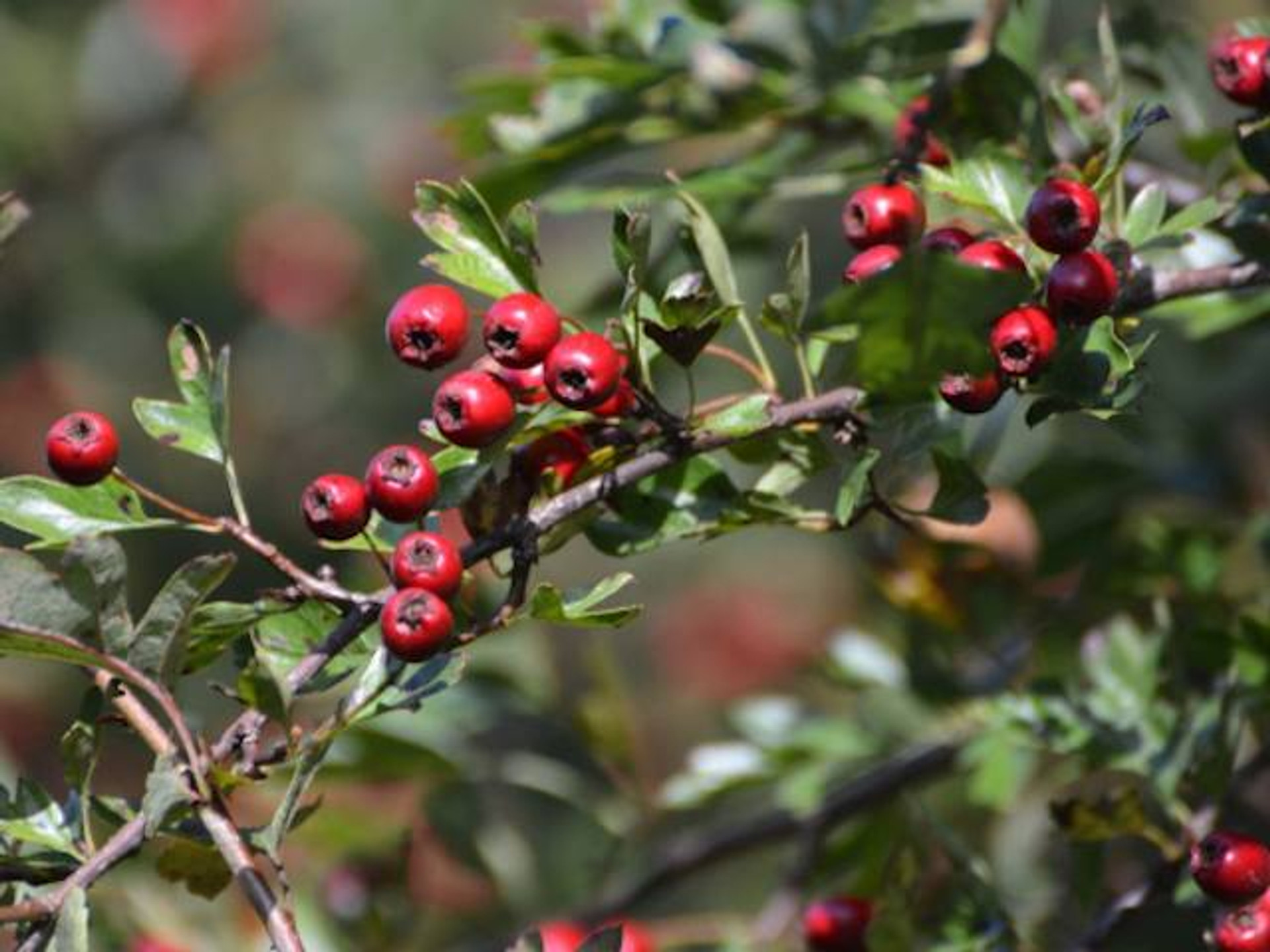
Edible Hedge Pack - Mixed pack of 25 Bare Root Plants
View ProductEdible Hedge Pack
Designed to create a haven for Autumn foragers, as well as providing some tasty treats for human appetites.
Consists of:
7 x Hawthorn
6 x Blackthorn (sloe)
2 x Hazel
2 x Elder
2 x Wild Crabapple
2 x Wild Pear
2 x Dog Rose
2 x Snowny Mespilus (June berry)
Note: on occasion, exact contents may change. Check the product description if in doubt.
For information on planting a bare root hedge, see this article.

